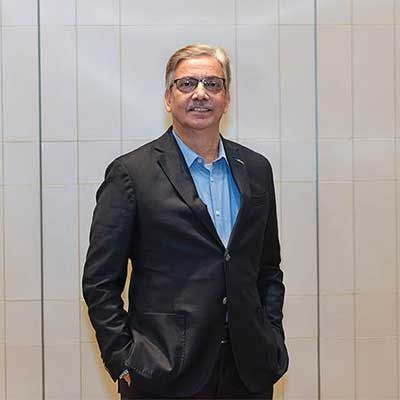The design-build model is best suited for the affordable housing programme
01 Apr 2019

- SC Dixit, Executive Director, Shapoorji Pallonji Engineering & Construction
Given land prices and other constraints in the urban areas and metropolitan cities of India, building high-rise residential towers for affordable housing becomes imperative. SC Dixit, Executive Director, Shapoorji Pallonji Engineering & Construction, shares more on technologies that can be adopted to meet the dire need of faster construction for affordable homes, in conversation with SERAPHINA D’SOUZA.
You have been awarded affordable housing projects in Andhra Pradesh. What is the average time currently taken for development per square feet and at what cost?
We have been awarded EPC contracts by the Andhra Pradesh Township Infrastructure Development Corporation (APTIDCO) for delivering a total of about 144,300 EWS dwelling units at various locations in Andhra Pradesh, spread over the districts of Guntur, Kurnool, Nandyal, Ananthapur, West Godavari and Prakasam. The total built-up area involved in the construction of these EWS units is to the tune of 50 million sq ft and the value of these works adds up to about Rs 84 billion. In addition, we have also been awarded the EPC contract by the Andhra Pradesh Capital Region Development Authority (APCRDA) for the construction of 1,440 housing units for gazetted officers at Andhra Pradesh Government Complex in the new capital region. The built-up area of this project is about 2.7 million sq ft and the contract is valued at about Rs 7 billion. Works are on in full swing; all these contracts need to be delivered phase-wise between March 2019 and March 2020. The average time period for delivering each phase is about 18 months.
What are your requirements for constructing houses in a shorter period of time that will lead to faster delivery of projects?
Generally speaking, the factors that can expedite the construction of affordable housing projects are:
- Freezing of user requirements that ensures architectural, structural and MEP design readiness.
- Faster approval process to be adopted for architectural, structural and MEP designs by the decision-makers.
- Adoption of advanced technologies such as monolithic concrete construction (shear wall technology) using aluminium formwork or precast construction. These technologies reduce cycle times and the requirement of construction labour, reduce project duration vis-à-vis conventional construction, reduce material wastage, and improve construction quality and safety. These technologies also eliminate labour-intensive activities such as masonry and plastering, thus leading to time and cost savings.
- No design changes to be introduced during the construction process. This
- affects the progress of construction work.
- A high degree of modularity of designs that ensures a higher repetition of formwork and higher productivity of mobilised resources.
- Other contributing factors include:
- Site readiness free from all encumbrances and clear work-fronts for all activities.
- Availability of all building permits and sanctions prior to commencement of construction.
- Availability of funds with the developers or project promoters to ensure smooth cashflows and work progress.
What global technologies should India adopt to hasten the construction of affordable houses?
The high-rise nature of residential structures for affordable housing naturally leads us to technologies such as monolithic concrete construction (shear wall technology) using aluminium formwork or precast construction, as mentioned above. Both these technologies are suitable for the Indian environment and to meet the unique challenges of urban housing development we face. Alternatively, the usage of dry wall panel along with an RCC structural frame also leads to quicker and energy-efficient homes. Although there are many examples of successful group housing projects being delivered using these technologies in India, there is tremendous scope to use these technologies to meet the demands of affordable housing in India. Therefore, affordable housing projects need to be designed to suit the adoption of these technologies. This will lead to faster deliveries and project success.
The government has launched the global technology challenge to build houses in a shorter time. What are your thoughts on the same?
The design-and-build project delivery system for affordable housing projects should be adopted by all public sector and government organisations. This system ensures that bidders adopt the latest construction technologies that improve cycle times, reduce manpower dependence, reduce material wastage, and eliminate wasteful activities. This automatically brings in time and cost advantages, which are then passed on by the bidders to their clients. The adoption of such technologies leads to many additional benefits to clients, such as improved safety and quality and greater chances of project success.
A lot of research and development efforts, today, are directed towards emerging technologies in precast construction that enable the manufacture of
the whole dwelling unit as a monolithic module (with no joints) and complete with interior finishes. Similarly, 3D printing is set to revolutionise housing construction. It will not be long before these technologies become affordable, especially for large volume constructions and become a commonplace in India. And, these technologies can then emerge as credible solutions to address India’s affordable housing challenges.
Related Stories

